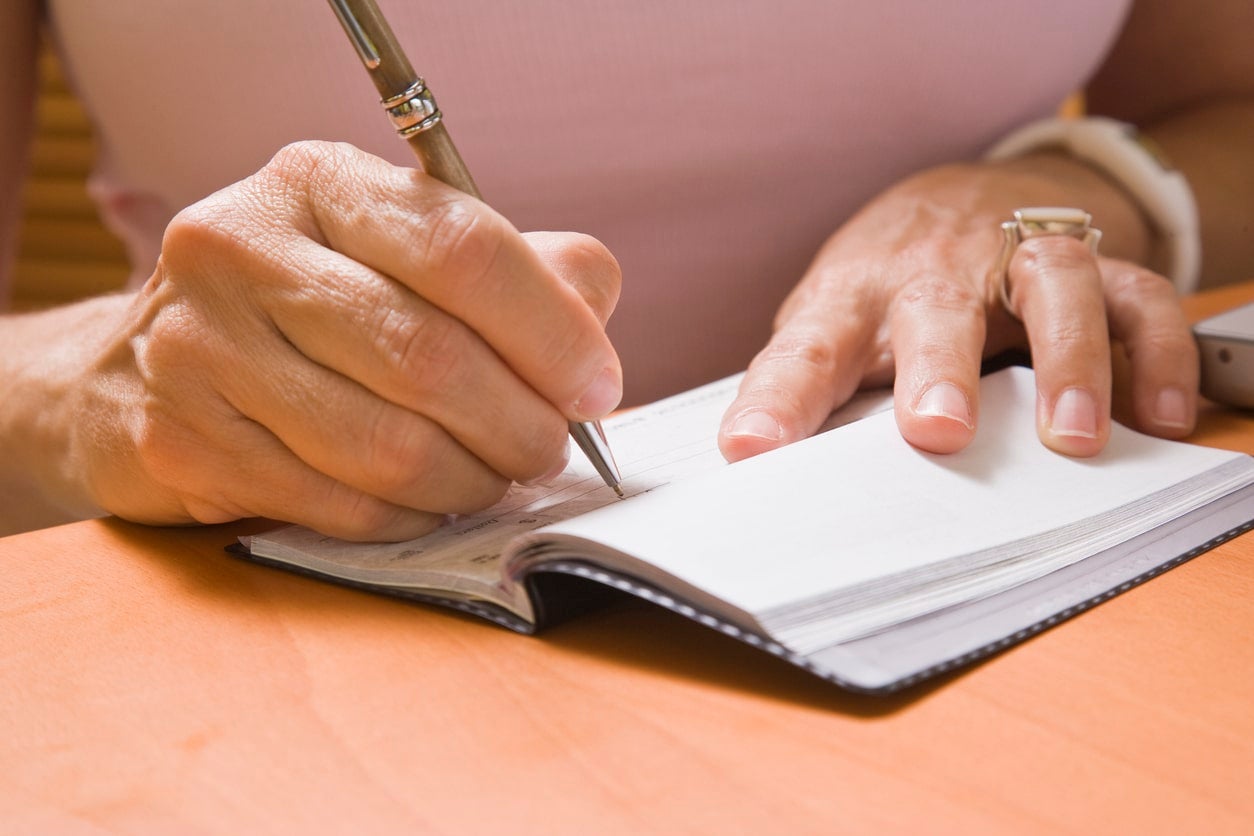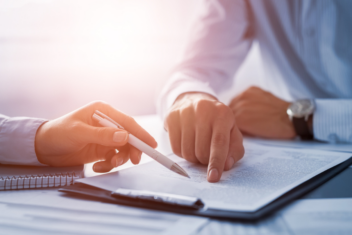Digital payments have become a convenient—and often faster—alternative to checks. However, checks can be a necessary form of payment, particularly for larger purchases or transactions; and while check writing has steadily decreased, cases of check fraud have doubled since 2021. That’s why it’s important to understand what information you should and shouldn’t include on a check and how to write and send a check securely when required.
We’re here to provide a few rules of thumb to remember during the check writing process.
Take Care of the Tangible Stuff
By nature, a check contains sensitive information such as your name, contact information, account and routing numbers, and signature, which are all put at risk should your check fall into the wrong hands.
Some of the common ways that fraud can happen is by check theft, check washing, and check forging. Criminals may rifle through your mailbox for any checks that may be in your outgoing mail. Sometimes, scammers go an extra step by using chemicals to “wash” or erase parts of your check and write in new payments details. If they access your account information, they may use it to create fake checks of their own.
To help prevent these from happening, it’s recommended that you:
- use permanent ink gel pens when writing out a check
- deliver mail containing a check directly to the post office rather than sending through your mailbox, and
- destroy miswritten or previously deposited checks according to your financial institution’s recommended timeline
Review Every Section of Your Check
A personal check includes a combination of pre-printed information and blank spaces to fill with payment and payee details. Each time you write a check, be sure to review both—in other words, all aspects of your check—to ensure accuracy and efficiency.
Here are some questions to ask yourself as you write out a personal check:
- Is my writing legible? To help your payee avoid issues with depositing your check, ensure that you’ve written all parts of the check clearly.
- Am I leaving space for someone else to alter my check? Fill each line clearly so that there’s no room for someone to tamper with what you have (or haven’t) written.
- Have I disclosed unnecessary personal information? Besides the basic contact and account information, leave off further identifying information such as phone number, driver’s license number, or Social Security number to help mitigate risk.
Learn More: Here’s What You Need to Know About How to Write a Check
Track Your Check Payments
Your job isn’t over once you’ve written and sent off your check. Keep an eye on the safety of your check by confirming with your payee that they’ve received and deposited your check, then review paid checks through your bank statement or online/mobile banking platform to ensure the payment was processed correctly.
Regardless of how recently you’ve written a check, it’s always a good idea to closely monitor your account activity, so that you can catch and correct anything unusual or potentially fraudulent.
Safety Check: Final Considerations
Even if you’re just an occasional check writer, understanding the risks of check fraud and how to help prevent it is your responsibility.
If you have questions, reach out to your financial institution for assistance. They, like you, want to ensure that your check is used for its intended purpose without compromising your information!
The American Banker Association is partnering with institutions like SouthEast Bank to help increase awareness about safe check writing during Cybersecurity Awareness Month. Explore their online resources for more helpful tips!
Information contained in this blog is for educational and informational purposes only. Nothing contained in this blog should be construed as financial, legal or tax advice. An attorney, financial advisor, and/or tax advisor should be consulted for advice based on your circumstances.
Links to other websites or references to services or applications are provided as a convenience only. A link does not imply SouthEast Bank’s sponsorship or approval of any other site, service or application. SouthEast Bank does not control the content of these sites, services or applications.




